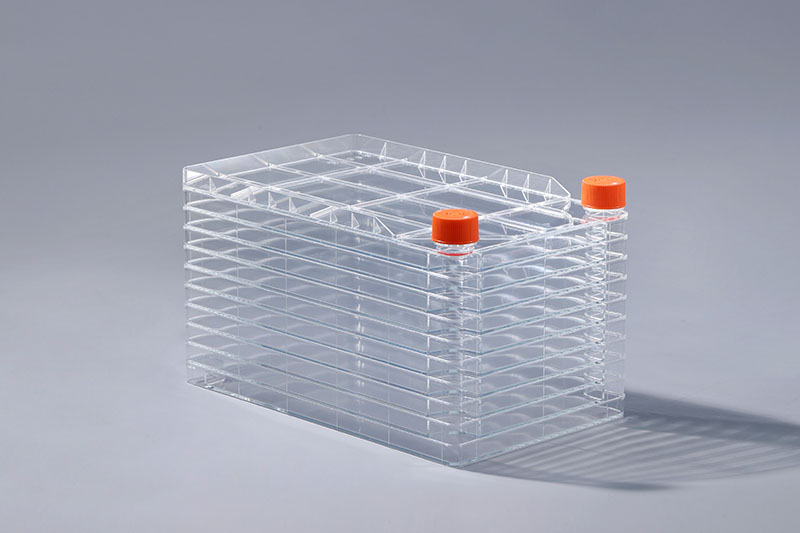대규모 세포 배양 기술은 인위적으로 환경 조건을 조절하고 유용한 미생물, 동식물 세포를 고밀도로 대규모로 배양하는 기술을 말합니다. 그것은 유전자 재조합, 세포 융합 및 식품 및 의약품과 같은 산업 생산의 기타 기술에 의해 얻은 수많은 새로운 세포의 기초입니다. 산업에서 세포 공장은 백신, 단일 클론 항체 또는 제약 산업의 대량 생산에 널리 사용됩니다. 대규모로 배양된 일반적인 동물 세포에는 닭 배아 섬유아세포, 1차 햄스터 신장 세포 및 기타 1차 세포뿐만 아니라 인간 이배체 세포, CHO 세포 및 Vero 세포가 포함됩니다. 이 세포는 백신 생산, 단일 클론 항체 제조, 에리트로포이에틴 및 기타 제품 분야에서 널리 사용됩니다. 일반적으로 대규모 세포 배양에서 사용되는 소모품 부착 세포의 배양에 적합합니다. 훈련 규모를 확장하려면 레이어 수를 늘려야 합니다. 이 훈련 방법은 넓은 공간의 활용을 극대화하고 공장 공간을 절약하며 인력과 물적 자원을 절약할 수 있습니다.
또한 세포 공장을 통한 대규모 세포 배양은 세포 배양 장치의 수를 줄이고 세포 오염의 위험을 줄일 수 있습니다. 효율적인 세포 배양 소모품이며 많은 과학 연구 기관 및 제약 회사에서 선호합니다.
In industry, cell factories are widely used in mass production of vaccines, monoclonal antibodies or the pharmaceutical industry. Common animal cells that have been cultured on a large scale include chicken embryo fibroblasts, primary hamster kidney cells and other primary cells, as well as human diploid cells, CHO cells, and Vero cells. These cells are widely used in vaccine production, monoclonal antibody preparation, erythropoietin and other product fields.
In addition, large-scale cell culture through cell factories can reduce the number of cell culture devices and reduce the risk of cell contamination. It is an efficient cell culture consumable and is favored by many scientific research institutions and pharmaceutical companies.
The FAI climbed 5.9 percent year-on-year in the first 11 months of 2018, quickening from the 5.7-percent growth in Jan-Oct, the National Bureau of Statistics (NBS) said Friday in an online statement.
The key indicator of investment, dubbed a major growth driver, hit the bottom in August and has since started to rebound steadily.
In the face of emerging economic challenges home and abroad, China has stepped up efforts to stabilize investment, in particular rolling out measures to motivate private investors and channel funds into infrastructure.
Friday's data showed private investment, accounting for more than 60 percent of the total FAI, expanded by a brisk 8.7 percent.
NBS spokesperson Mao Shengyong said funds into weak economic links registered rapid increases as investment in environmental protection and agriculture jumped 42 percent and 12.5 percent respectively, much faster than the average.
In breakdown, investment in high-tech and equipment manufacturing remained vigorous with 16.1-percent and 11.6-percent increases respectively in the first 11 months. Infrastructure investment gained 3.7 percent, staying flat. Investment in property development rose 9.7 percent, also unchanged.
 English
English



















































